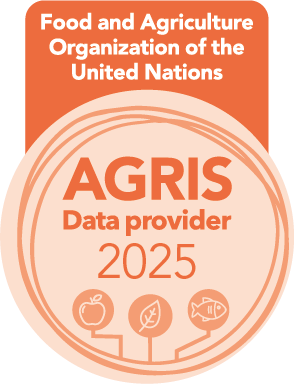

Address: 17 Naberezhnaya Severnoy Dviny, Arkhangelsk 163002 Russian Federation. Northern (Arctic) Federal University named after M.V.Lomonosov. Office 1425
Phone / Fax: (818-2) 21-61-18
E-mail: forest@narfu.ru
http://lesnoizhurnal.ru/en/
 
|
Improving the Efficiency of Using Plywood Production By-Products. С. 155-168
|
 |

These works are licensed under a Creative Commons Attribution 4.0 International License.
Lyubov V.K.
UDС
662.6/9
DOI:
10.37482/0536-1036-2025-3-155-168
Abstract
To use plywood production waste to generate energy ensuring the operation of the non-public limited liability company “SVEZA Ust-Izhora” a mini-heat-and-power plant with 2 Е-40-2.25-305ОP boilers and a turbine has been installed. A 2-stage ash clearing of combustion products has been provided. The 1st stage ensures the removal and return of coarse fractions to the vibrating grid. At the 2nd stage, the products pass through bag filters. An energy inspection of the boiler units has revealed that the gas cleaning system is the cause of their frequent shutdowns and starts, additional heat losses and a reduction in the equipment life cycle. In this regard, instead of bag filters, a dust and ash collection complex (KPZU-10×6×2) has been installed. However, the degree of solid particle capture by the complex has been no more than 80 %, ash has been observed sticking to the impeller of the smoke exhauster, which has caused and imbalance and a reduction in the life cycle of the smoke exhauster and the need to stop the boiler at least once a week. The aim of this article has been to establish the reasons for the increased emissions of solid particles and carbon monoxide, the limited period of operation of the boiler unit between cleanings, as well as the lack of the possibility of prompt removal of ash and slag to the landfill. A comprehensive analysis of the boiler unit operation has been carried out on the basis of the operational and environmental performance indicators of the boiler, thermal engineering and granulometric characteristics of samples of the combusted biofuel and the resulting focal residues, as well as their elemental composition and thermogravimetric characteristics for plywood chips. The modernization of the gas cleaning complex has ensured the functioning of the boiler with a nominal steam capacity and has reduced the number of its stops between cleanings by 7–21 times. However, the use of a boiler with a higher capacity has lead to an increase in the polydispersity of fly ash and the content of combustible substances in it, which has become one of the reasons for its smoldering in the collection container. Periodic switching on of the vibrating grid has resulted in significant instability of environmental indicators. A study of the polluting potential of plywood scrap ash has found it to be the most powerful polluting component in the combusted mixture. The study of thermal processes in plywood chips in air and inert environments has shown a noticeable influence of the presence of glue based on phenol-formaldehyde resin.
Affiliation
Northern (Arctic) Federal University named after M.V. Lomonosov, Naberezhnaya Severnoy Dviny, 17, Arkhangelsk, 163002, Russian Federation; vk.lubov@mail.ru
Keywordsplywood production, plywood production waste, gas cleaning unit, boiler, biofuel, harmful substances, efficiency, combustion residue
References
- Biryukov V.G. Technology of Glued Materials and Wood Boards. Мoscow, 2012. 292 p. (In Russ.).
- Bobovich B.B., Devyatkin V.V. Recycling of Production and Consumption Waste. Moscow, Intermet Inzhiniring Publ., 2000. 495 p. (In Russ.).
- Varankina G.S., Chubinskij A.N. Fundamentals of Complex Processing of Raw Materials. St. Petersburg, St. Petersburg State Forest Technical University, 2016. 56 p. (In Russ.).
- Volynskij V.N. Technology of Glued Wood Materials. Vologda, Infra-Inzheneriya Publ., 2022, vol. 1. 340 p. (In Russ.).
- Golovkov S.I., Koperin I.F., Najdenov V.I. Energy Use of Wood Waste. Moscow, Lesnaya promyshlennost’, Publ., 1987. 224 p. (In Russ.).
- Dubinina N.N., Orlov A.A., Korchuk Yu.A., Lyakh N.I. Energy Use of Sawmill Waste. Aktual’nye problemy lesnogo kompleksa, 2016, no. 45, pp. 17–21. (In Russ.).
- Zhuchkov P.A. Thermal Processes in Pulp and Paper Production. Moscow, Lesnaya promyshlennost’ Publ., 1978. 408 p. (In Russ.).
- Kolesnikova A.A., Budaev V.A. Technological Calculations in Plywood Production: Tutorial on Course Design. Yoshkar-Ola, Volga State University of Technology Publ., 2010. 108 p. (In Russ.).
- Lyubov V.K., Danilov V.E. Environmental and Energy Efficiency of Plywood Production Waste Burning. Ekologiya i promyshlennost’ Rossii = Ecology and Industry of Russia, 2023, vol. 27, no. 5, pp. 8–14. (In Russ.). https://doi.org/10.18412/1816-0395-2023-5-8-14
- Lyubov V.K., Lyubova S.V. Improving the Efficiency of Energy Use of Biofuels. Arkhangelsk, Northern (Arctic) Federal University Publ., 2017. 533 p. (In Russ.).
- Lyubov V.K., Popov A.N., Ivut’ A.E., Kondakov S.O., Sedletskij N.I. Improving the Efficiency of Energy Use of Plywood Production Waste. Vestnik Cherepovetskogo gosudarstvennogo universiteta. Seriya: Tekhnicheskie nauki = Cherepovets State University Bulletin. Series: Technology, 2016, no. 4, pp. 28–32. (In Russ.).
- Lyubov V.K., Tsypnyatov I.I. Improving the Efficiency of Energy Use of Biofuels. Lesnoy Zhurnal = Russian Forestry Journal, 2023, no. 1, pp. 172–185. (In Russ.). https://doi.org/10.37482/0536-1036-2023-1-172-185
- Mokhirev A.P., Bezrukikh J.A., Medvedev S.O. Recycling of Wood Wastes of Timber Industry, as a Factor of Sustainable Resource Management. Inzhenernyj vestnik Dona = Engineering Journal of Don, 2015, no. 2, part 2. (In Russ.).
- Presnyakova E.A. Disposal of Wood Production Waste. Vestnik magistratury, 2014, vol. 1, no. 11 (38), pp. 15–18. (In Russ.).
- Razinkov E.M., Ishchenko T.L. Enhancing the Efficiency of Plywood Production. Lesotekhnicheskij zhurnal = Forestry Engineering Journal, 2019,vol. 9, no. 1 (33), pp. 140–146. (In Russ.). https://doi.org/10.12737/article_5c9201701e8f75.87209710
- Safonov G.V., Stetsenko A.V., Dorina A.L., Avaliani S.L., Safonova Yu.A., Besedovskaya D.S. Low-Carbon Development Strategy for Russia: Opportunities and Benefits of Replacing Fossil Fuels with “Green” Energy Sources. Moscow, TEIS Publ., 2016. 48 p. (In Russ.).
- Semenov Yu.P., Hilling B., Parikka M., Shtern T., Sejsenbaeva G. Forest Bioenergetics. Moscow, Moscow State Forest University Publ., 2008. 348 p. (In Russ.).
- Thermal Calculation of Boilers (Standard Method). St. Petersburg, OAO Unified Energy System of Russia, All-Russian Thermal Engineering Institute, I.I. Polzunov Scientific and Development Association on Research and Design of Power Equipment, 1998. 257 p. (In Russ.).
- Trembovlya V.I., Finger E.D., Avdeeva A.A. Thermal Engineering Tests of Boiler Installations. Moscow, Energoatomizdat Publ., 1991. 416 p. (In Russ.).
- Fedotov A.A. Technology and Equipment for the Production of Sawn Timber, Plywood, Planed Veneer and Chipboard. Vologda, Infra-Inzheneriya Publ., 2022. 140 p. (In Russ.).
- Yur’ev Yu.L. Charcoal. Ekaterinburg, Sokrat Publ., 2007. 184 p. (In Russ.).
- García R., Pizarro C., Álvarez A., Lavín A.G., Bueno J.L. Study of Biomass Combustion Wastes. Fuel, 2015, vol. 148, pp. 152–159. https://doi.org/10.1016/j.fuel.2015.01.079
- Moura P., Henriques J., Alexandre J., Oliveira A.C., Abreu M., Gírio F., Catarino J. Sustainable Value Methodology to Compare the Performance of Conversion Technologies for the Production of Electricity and Heat, Energy Vectors and Biofuels from Waste Biomass. Cleaner Waste Systems, 2022, vol. 3, art. no. 100029. https://doi.org/10.1016/j.clwas.2022.100029
- Porfiriev B.N., Roginko S.A. Energy on Renewable Sources: Prospects for the World and for Russia. Herald of the Russian Academy of Sciences, 2016, vol. 86, pp. 433–440. https://doi.org/10.1134/S101933161606006X
- Priya, Deora P.S., Verma Y., Muhal R.A., Goswami C., Singh T. Biofuels: An Alternative to Conventional Fuel and Energy Source. Materials Today: Proceedings, 2022, vol. 48, part 5, pp. 1178–1184. https://doi.org/10.1016/j.matpr.2021.08.227
- Wang L., Weller C.L., Jones D.D., Hanna M.A. Contemporary Issues in Thermal Gasification of Biomass and its Application to Electricity and Fuel Produc-tion. Biomass Bioenergy, vol. 32, iss. 7, pp. 573–581. https://doi.org/10.1016/j.biombioe.2007.12.007
|
Make a Submission


Lesnoy Zhurnal (Russian Forestry Journal) was awarded the "Seal of Recognition for Active Data Provider of the Year 2025"

|








